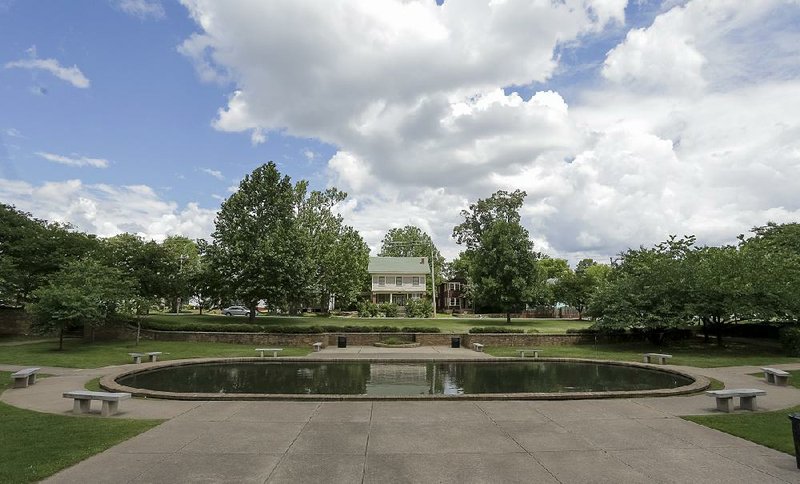WASHINGTON -- Homes lining a street where history was made would be added to the Little Rock Central High School National Historic Site under legislation filed Tuesday on Capitol Hill.
If the proposal becomes law, seven South Park Street houses sitting on roughly 1.5 acres will be placed within the historic site's boundaries.
Two Republican lawmakers from Arkansas, U.S. Sen. Tom Cotton of Dardanelle and U.S. Rep. French Hill of Little Rock, introduced the bill.
"This site is not just a part of Arkansas' history, it's a part of our national heritage," Cotton said in a speech on the Senate floor Tuesday.
U.S. Rep. John Lewis, D-Ga., who spoke at the 1963 March on Washington and survived a brutal 1965 attack in Selma, Ala., is co-sponsoring the House version. U.S. Sen. Patrick Leahy, D-Vt., is the Senate co-sponsor.
The measure is supported by homeowners, the Central High Neighborhood Association and Preserve Arkansas, Cotton said.
Rachel Silva Patton, executive director of Preserve Arkansas, said the seven residences were all built before 1957, the year that nine black high school students integrated the school.
"They appear in many of the photographs that were taken during the desegregation crisis, and it's important to the entire neighborhood as a whole that those houses are preserved. It's also important to the national historic site, as well."
Journalists from around the world descended on the neighborhood to watch the Little Rock Nine break the color barrier at the school.
The images were seen around the world.
"Ask anybody who lived through the crisis, and they'll tell you they remember it vividly," Cotton said. "They may not have been there in person. But they remember the photos -- those searing images of an angry mob, the stoic students, the bayoneted troops, all gathered in a high school of all places."
The Little Rock Nine must be remembered, he said.
"We preserve historic battlefields like Yorktown and Gettysburg because we want our children to know what it took to gain and keep our freedom -- the sacrifices made, the hardships endured. But equally important is preserving historic sites like Central High, where our citizens began the long road to freedom from oppression and intolerance."
Legislation creating the Little Rock Central High School National Historic Site was signed into law Nov. 6, 1998, by then-President Bill Clinton. During the ceremony, Clinton called the site "a hallowed place, a place every bit as sacred as Gettysburg and Independence Hall."
If approved, the latest legislation empowers the secretary of the Interior Department "to enter cooperative agreements" with the homeowners. The secretary could also use funds, if appropriated, "to mark, interpret, improve, restore, and provide technical assistance with respect to the preservation and interpretation of the properties."
Once an agreement was in place, changes to the exteriors of the homes would only be allowed if the homeowner and the secretary agreed with the alterations.
"The long-term objective is to preserve the streetscape as close as one can to the historic period," said Hill, whose central Arkansas district includes the site.
The legislation increases the chances that the street will continue to resemble the neighborhood as it was in 1957, Hill said.
The second-term lawmaker said he is pleased to work with Lewis on the project.
"Everyone in America admires John Lewis for his leadership in the civil-rights movement. I have tremendous respect for Rep. Lewis and ... I was glad he was willing and interested in doing it," Hill added.
Metro on 05/24/2017

